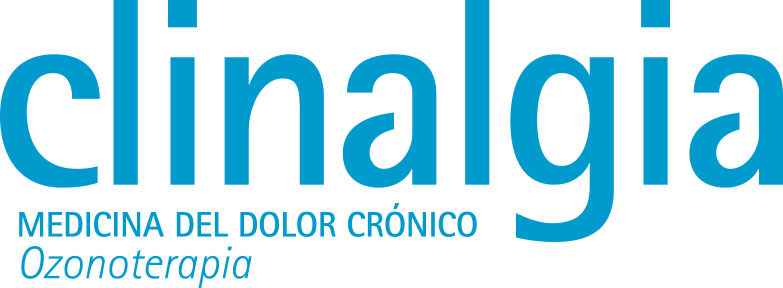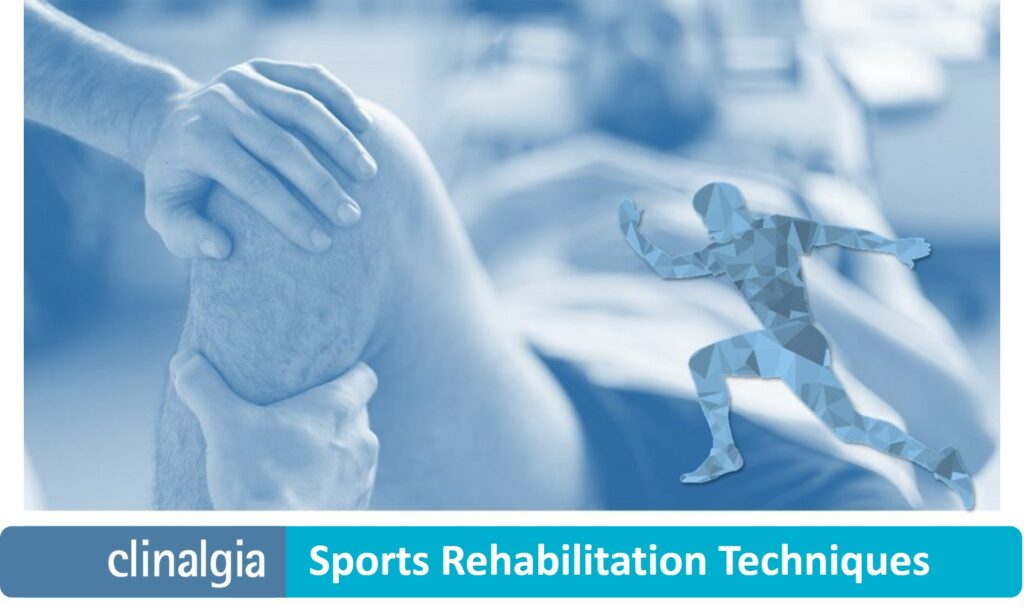
Sports Rehabilitation Techniques
Among the most common sports rehabilitation techniques for the treatment and prevention of injuries are:
-
-
- Sports physiotherapy
- Electrotherapy
- Lymphatic drainage
- Cryotherapy
- Sports supplementation
-
-
-
-
- Creatine
- Omega-3
- Protein supplementation
- Glutamine
- Beta-Alanine
- Arginine and citrulline
- Leucine, isoleucine and valine
- Hydroxy-Methyl-Butyrate
- Nitrate
- Caffeine
- Beetroot juice
-
-
6.- References
- Sports physiotherapy
The first of the sports rehabilitation techniques is sports physiotherapy.
It is aimed at both the treatment and prevention of sports injuries.
The physiotherapist is an indispensable support in the identification and detection of tight bands and myofascial trigger points to be treated with infiltrative therapies.
In our protocols he is crucial in pre- and post-infiltrative treatment.
In addition, the sports physiotherapist studies the biomechanics of each patient and detects the limitations and deviations of the same, facilitating and creating tables of stretching and strengthening exercises that the athlete will insert into their preparation plans.
Electrotherapy
This technique produces electrical stimulation of both nerve endings and muscle fibres.
There are different types of sports rehabilitation based on electrotherapy.
Transcutaneous stimulation of peripheral nerves
In the treatment of chronic pain, transcutaneous peripheral nerve stimulation (TENS) is aimed at «distracting» the painful sensation in patients with chronic pain.
Ultrasound
The application of ultrasound promotes vascularisation in deep tissues and is used for the treatment of tendonitis, myositis, meniscal tears, etc.
Electroacupuncture
Electroacupuncture is a minimally invasive sports rehabilitation technique that uses needles to transmit the therapeutic effects of electrical stimulation to deeper structures.
Shockwave therapy
Shockwave is a modality used to stimulate collagen production, break up tight bands, release trigger points and reduce inflammation.
It is used for Achilles tendonitis, plantar fasciitis or tennis elbow.
Ozone therapy infiltrated at high concentrations and other manual techniques are a good complement.
Lymphatic drainage
The lymphatic system is made up of a number of vessels and lymph nodes through which lymph circulates, which is a filtrate of intercellular fluid.
This filtrate may contain microorganisms, fatty molecules, and other detritus, which are destroyed by lymphocytes in the lymphatic system’s enlargements, which are the lymph nodes.
The basis of lymphatic drainage is the activation of lymphatic circulation by means of massages that follow the course of the network of vessels, stimulating their circulatory and depurative activity and improving the function of the immune system.
Cryotherapy
This is the exposure of all or part of the body to unusually low temperatures.
In principle, the cold will induce vasoconstriction, with subsequent reactive vasodilation, favouring blood supply and all the benefits that this entails.
In effect, a process of ischaemia/reperfusion is set in motion, which is a model of «cellular training» to periods of reduced oxygen supply, which, like ozone therapy, would activate antioxidant defences.
Studies have been published on migraines, and osteoarthritic pain [1], [2].
Sports supplementation
In general, we use sports supplementation as an anti-inflammatory and ergogenic aid to help muscular strength and endurance.
Numerous supplements have been proposed, generally with limited levels of credence, inviting «trial and error» on a patient-by-patient basis.
Creatine
Creatine is one of the most widely used supplements, and one of those with the highest level of evidence.
Several studies have consistently shown that increasing intramuscular creatine concentrations can improve exercise performance and/or enhance training adaptations.[3] Intramuscular creatine is one of the most widely used supplements, and one of the ones with the highest level of evidence.
Omega-3
Omega-3 supplementation has recently been proposed as an ergogenic aid for athletes.
It is purported for its anti-inflammatory properties and for reducing oxygen cost during exercise.[4] Omega-3 supplementation may also help to improve exercise performance.
Protein supplementation
Protein-rich diets and protein supplements appear to be safe in healthy patients.
Protein supplementation in endurance competition appears to be beneficial.
The source of protein and timing of protein intake appear to be less important. [5]
Glutamine
Promotes glycogen synthesis, has anti-catabolic effects.
In addition, it is essential for lymphocyte proliferation and would enhance immunity in sick patients.
Although there is not much data on its usefulness in athletes, it is accepted that it would be effective if the intensity of the sporting activity is high.[6]
Beta-Alanine
It has a significant overall effect in terms of producing an ergogenic effect, although this would depend on the type of exercise chosen.[7] Arginine and citrulline are also known to have an ergogenic effect.
Arginine and citrulline
Both can increase levels of nitric oxide metabolites, regulating vasodilation, blood flow, mitochondrial respiration and platelet function.
L-Arginine is the main precursor of NO, and L-citrulline can be converted to L-arginine[8].
Leucine, isoleucine and valine
Leucine, isoleucine and valine are branched-chain amino acids that make up about one-third of muscle protein.
Supplementation of these amino acids, especially leucine (which is more sensitive to degradation) before or during endurance exercise may prevent or slow muscle breakdown and improve mental and physical performance.[9] Supplementation of these amino acids, especially leucine (which is more sensitive to degradation) before or during endurance exercise may prevent or slow muscle breakdown and improve mental and physical performance.
Hydroxy-Methyl-Butyrate
Derived from leucine.
Its anti-catabolic action reduces muscle protein degradation during intense exercise.[10] Nitrate.
Nitrate
Converts to nitrite, which in turn converts to nitric oxide under conditions of low oxygen availability, with beneficial roles in vascular and metabolic control, improving exercise tolerance and performance.
It also lowers resting blood pressure.[11]
Caffeine
Several studies have shown an improvement in exercise performance in submaximal endurance activities.
Its potential ergogenic effect in acute, high-intensity exercise is less clear.[12] Caffeine is also known to improve exercise performance.
Beetroot juice
Its intake has been shown to increase blood levels of nitric oxide, thereby promoting vasodilation and oxygen delivery to the muscular system.
Although scientific studies are inconclusive, it is thought to reduce muscle fatigue. This effect could be diminished by the simultaneous consumption of caffeine.[13] This effect could be reduced by the simultaneous consumption of caffeine.
References:
[1] Sprouse-Blum AS, Gabriel AK, Brown JP, Yee MH. Randomized controlled trial: targeted neck cooling in the treatment of the migraine patient. Hawaii J Med Public Health. 2013;72: 237-241.
[2] Metzger D, Zwingmann C, Protz W, Jäckel WH. Whole-body cryotherapy in rehabilitation of patients with rheumatoid diseases–pilot study. Rehabilitation (Stuttg). 2000; 39: 93-100.
[3] Kreider RB, Kalman DS, Antonio J, Ziegenfuss TN, Wildman R, Collins R, Candow DG, Kleiner SM, Almada AL, Lopez HL. International Society of Sports Nutrition position stand: safety and efficacy of creatine supplementation in exercise, sport, and medicine. J Int Soc Sports Nutr. 2017; 14:18.
[4] Philpott JD, Witard OC, Galloway SDR. Applications of omega-3 polyunsaturated fatty acid supplementation for sport performance. Res Sports Med. 2019; 27: 219-237.
[5] Huecker M, Sarav M, Pearlman M, Laster J. Protein Supplementation in Sport: Source, Timing, and Intended Benefits. Curr Nutr Rep. 2019; 8: 382-396.
[6] Gleeson M. Dosing and efficacy of glutamine supplementation in human exercise and sport training. J Nutr. 2008; 138: 2045S-2049S.
[7] Saunders B, Elliott-Sale K, Artioli GG, Swinton PA, Dolan E, Roschel H, Sale C, Gualano B. β-alanine supplementation to improve exercise capacity and performance: a systematic review and meta-analysis. Br J Sports Med. 2017; 51: 658-669.
[8] Sureda A, Pons A. Arginine and citrulline supplementation in sports and exercise: ergogenic nutrients? Med Sport Sci. 2012; 59: 18-28.
[9] Mero A. Leucine supplementation and intensive training. Sports Med. 1999; 27: 347-58.
[10] Palacios, N.; Manonelles, P.; Blasco, R.; Franco, L.; Teresa Gaztañaga, B.M.; García, J.A.V. Documento de consenso de la Federación Española de Medicina del Deporte, 2019. Available online: http://archivosdemedicinadeldeporte. com/articulos/upload/Doc-consenso-ayudas-2019.pdf (accessed on 15 July 2020).
[11] Jones AM. Dietary nitrate supplementation and exercise performance. Sports Med. 2014; 44 Suppl 1: S35-45.
[12] Keisler BD, Armsey TD 2nd. Caffeine as an ergogenic aid. Curr Sports Med Rep. 2006; 5: 215-219.
[13] Domínguez R, Maté-Muñoz JL, Cuenca E, García-Fernández P, Mata-Ordoñez F, Lozano-Estevan MC, Veiga-Herreros P, da Silva SF, Garnacho-Castaño MV. Effects of beetroot juice supplementation on intermittent high-intensity exercise efforts. J Int Soc Sports Nutr. 2018; 15:2.


